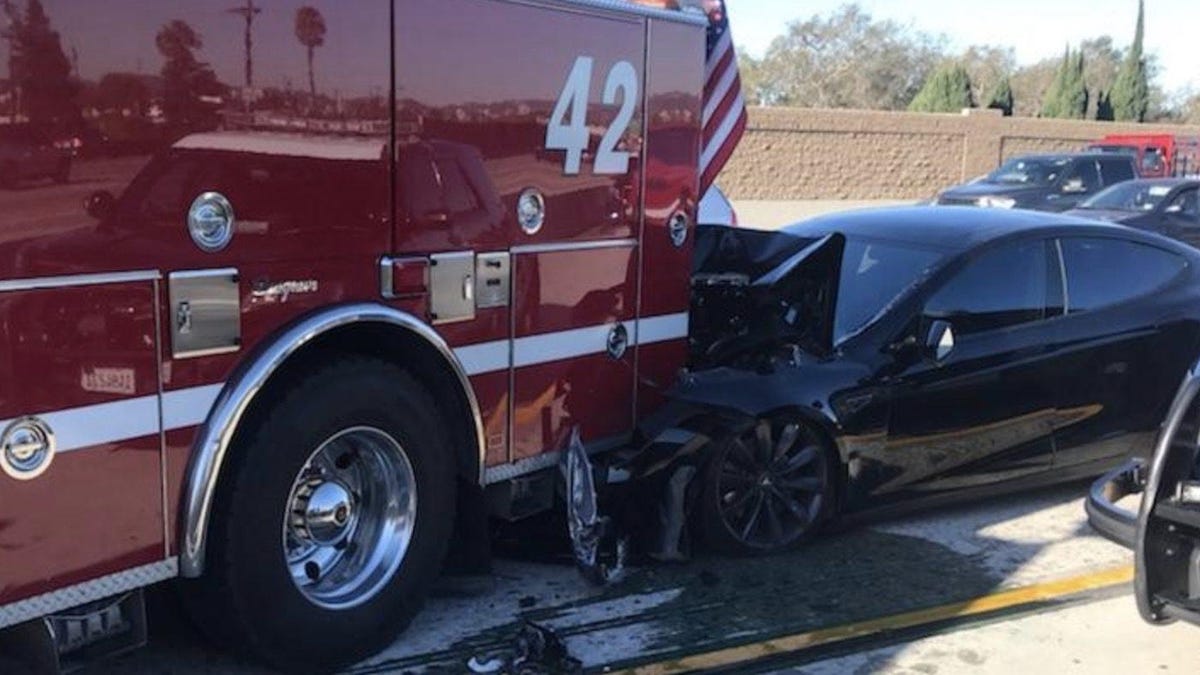Autopilot was engaged in the crash of a Tesla Model S into a firetruck in LA, NTSB says
Guess what? The driver was using Autopilot incorrectly by not having his hands on the steering wheel.
One of the more highly publicized Tesla crashes in recent memory involved a man in Los Angeles plowing his Tesla Model S into the back of a fire truck. The car wasn't going all that fast and thankfully nobody was hurt, but it was a fairly gnarly crash nonetheless.
Part of the government's investigation into the crash involved finding out whether or not Tesla's Autopilot system had been engaged at the time of the collision and if so, determining whether or not the driver was paying attention to what was going on around them.
Well, it's been a while, but the National Transportation Safety Board (NTSB) has released part of the findings of its inquiry according to a Tweet published by the agency on Tuesday and hey, guess what? The driver of the vehicle was found only to have had his hands on the wheel as prescribed by Tesla (and good sense) for 51 seconds of the final 13 minutes and 48 seconds of the drive. Even worse, his hands weren't on the wheel at all for the last 3 minutes and 41 seconds before the crash.
When questioned by the NTSB as to what he was doing at the time of the crash, the driver stated, "I was having a coffee and a bagel. And all I remember, that truck, and then I just saw the boom in my face and that was it."
Clearly, there was a breakdown in the system here, and while Autopilot isn't a perfect system and while we've criticized its name as being somewhat misleading, the fault here doesn't seem to lie solely with Tesla.
The moral of the story here is that the advanced driver assistance systems, like Autopilot, that are found in many of the vehicles being sold today are not a form of self-driving. There is no "self-driving" car on sale today, and it's the responsibility of the driver to pay attention to the world around them as they drive.
Tesla didn't immediately respond to Roadshow's request for comment.


